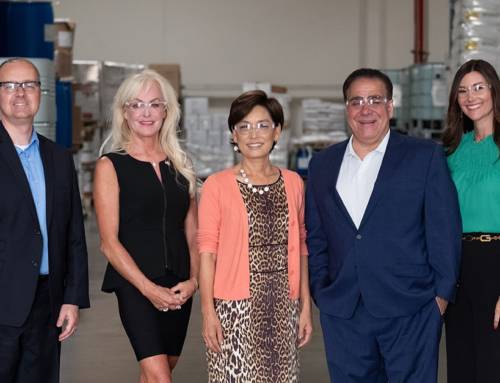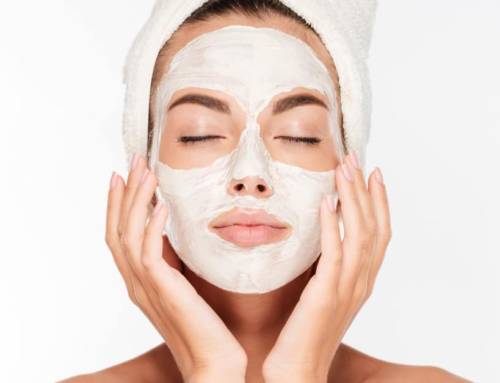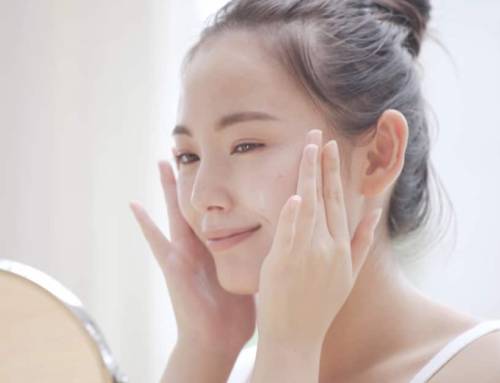Sustainable Skincare Series, Part 1: What Is Sustainable Skincare?
By Traci Cassell • April 22, 2021

Today in the beauty industry we’re seeing more and more brands talking about sustainability.
“Sustainability in beauty is increasingly becoming a consumer priority across the globe, with many choosing to buy fewer plastic products and expecting brands to make their products more sustainable—and this has been emphasized by the pandemic. This expectation is pushing beauty brands towards new sustainable innovations,” explains Alex Fisher, an Associate Director for Beauty & Personal Care at Mintel.
Consumers, especially Gen Z and Millennials, want to reduce their environmental footprint by purchasing and using eco-friendly, sustainable cosmetic products. That suggests more earth-friendly packaging and less one-time use plastics. It also could include farming of natural ingredients to use less land and reduce deforestation. Another facet is emphasizing more lab-created ingredients.
There are four key components of sustainable skincare products that seem to be the focus for brands, formulators, product development, and marketing teams: an eco-friendly footprint, more lab-made ingredients, solid rather than liquid formulations, and earth-friendly packaging.
An Eco-Friendly Footprint
Sustainable skincare used to mean products that include eco-friendly, natural, or organic ingredients.
However, this concept has expanded to include the entire process of creating a finished product from raw material sourcing to formulation, to manufacturing, to packaging. A sustainable skincare product must have an eco-friendly footprint from start to finish.
Consider this “eco-conception” approach to skincare:
- Access to resources (seeds, fields, location)
- Responsible, ethical sourcing and biodiversity preservation (renewable resources)
- Managing all steps of the supply chain with full traceability
- How are the resources cultivated? What are the agriculture and collection practices? How are resources handled once harvested (e.g. drying)?
- How are resources stored? When is the best time to grind the plants?
- How can energy consumption be reduced at the production level?
- Evaluate the impact of waste (raw materials, water, solvents, lab waste, etc.). Are the resources biodegradable/compostable?
With a checklist like this, it’s clear that sustainable skincare now encompasses the entire process from concept to the finished consumer product.
For formulators, this new approach to greener skincare goes beyond the ingredients used in a formula to include how those ingredients being harvested, the manufacturing process, as well as consideration of ethical labor practices. Sustainability now means the entire eco-footprint of a skincare product.
More Lab-Made Ingredients
One solution for creating more sustainable skincare is to use lab-grown ingredients, such as peptides and fermented biotics.
Lab-created ingredients, like peptides and fermented ingredients, are truly one of the most sustainable ingredient options available to skincare formulators today. These types of ingredients do not tax the land like plants, fruits and grains can do. Since they don’t need to be to be planted or harvested, lab-grown ingredients for skincare products do not take up land. That can help reduce further deforestation or and potential harm to the oceans.
Lab-grown ingredients are also considered very sustainable because the original cultures can continue to grow in the lab. Lab-made ingredients, like those in the biotics family, have recently surged in popularity, thanks to the consumer embrace of more cleanical formulations.
For sustainably-minded formulators and consumers, the new focus on the benefits of lab-made ingredients, including peptides and fermented biotics, plays an important role in achieving a more eco-friendly future for the beauty industry and creating more sustainable skin care products for consumers.
Solid Rather than Liquid Formulations
Another component of modern, sustainable skincare products is the advent of more solid, rather than liquid, skincare formulations.
“Perfectly in line with current trends, like nomadism, clean beauty, and zero waste, solid cosmetics are booming. Historically positioned on the makeup segment, over the past few years, solid products have stormed into that of hygiene, bringing both new solutions and gestures which quickly found their own public. They are now entering the skincare category due to the accumulated effect of innovation and a rising consumer expectation as regards more hygienic ‘post-COVID’ applications,” explains Kristel Milet in Premium Beauty News.
Solid skincare formulations are thought to be more eco-friendly for a variety of reasons. But perhaps most importantly, solid skincare formulations are often water-free. As concerns about drinking water shortages grow, waterless formulations are an important step towards more sustainable skincare products.
It’s also worth noting that anhydrous skincare products can be quite potent, thanks to a lack of typical filler ingredients. This makes solid skincare formulations appealing to both sustainable and skinimalist consumers, as results-driven products can help to reduce overall consumption.
Earth-friendly, Eco-driven Packaging
Looking to the future, it is clear that most sustainable skincare formulations will have one thing in common: more eco-friendly packaging.
Today, a chief concern amongst skincare consumers is the amount of packaging used for their skincare products. In fact, according to a recent survey of U.S. citizens, 78% of respondents said they wanted to be more sustainable in 2021, and 60% of those wanting to be sustainable most wanted to reduce their use of plastic products.
So, what does this mean for formulators? A mix of less packaging, more bio-based packaging materials, and refillable, reusable formats for skincare products.
Solutions for more sustainable packaging options for skincare products are:
- Less packaging – simply reducing the amount of packaging used for skincare products, most notably in the prestige or luxury category
- Recyclable packaging – fully recyclable product packaging
- Compostable or bio-based packaging – materials like plant cellulose or cardboard that can naturally break down
- Refillable products – metal and glass tubes, tins, and containers that can be refilled with product
- Reusable products – to help curb waste
- Package-free skincare products – for example bar soap, solid lotion bars, and balms
Many major skincare and beauty brands are already working to improve and innovate their packaging to make their products more sustainable. For example, Garnier is aiming to use zero virgin plastic in packaging by 2025. Aveda now uses over 85% bottled recycled plastic and is experimenting with sugarcane-derived bioplastics. And Unilever’s Love Beauty and Planet brand uses bottles made from 100% post-consumer recycled plastic.
However, it’s not just the big names who are pivoting to more innovative packaging formats. Smaller, indie, and cult-favorite skincare brands are also focused on reducing their packaging and plastic use. In fact, some of these Indie brands could be considered trail blazers for more sustainable products in the beauty industry. No B.S. Skincare announced a transition to sustainable aluminum products and REN Skincare’s green goal is to use only packaging that’s recycled, recyclable, or reusable by the end of 2021.
The Sustainable Future
The beauty industry overall and the skincare segment in particular are definitely concerned about sustainability. Consumers want to know how finished products meet new standards of eco-friendliness.
Focus is on the entire eco-footprint of a formulation, from more lab-created ingredients, to the surge in solid vs. liquid formulations. Gen Z and Millennials seek more innovative, plastic-free packaging. Across the personal care industry, formulators are poised to create the kind of sustainable skincare products that more and more consumers are demanding.
Go Beyond Beauty. Face ♦ Body ♦ Hair
Discover the most sophisticated, anti-aging ingredients portfolio for face, body, hair and scalp care applications.


 Traci Cassell is Vice President, Anti-Aging for Coast Southwest. Traci has more than a decade’s experience in the personal care industry, expanding Coast Southwest’s strategic emphasis on innovative anti-aging skincare and haircare solutions. Traci partners with suppliers from around the world build Coast Southwest’s sophisticated ingredient portfolio, which is based on cutting-edge, cosmetic science and advanced raw material technology. With expert knowledge in all phases of product development, marketing, and brand-building, she and her anti-aging category team technically support Coast Southwest sales representatives and advance customer projects through personalized collaboration with the company’s state-of-the-art applications laboratory
Traci Cassell is Vice President, Anti-Aging for Coast Southwest. Traci has more than a decade’s experience in the personal care industry, expanding Coast Southwest’s strategic emphasis on innovative anti-aging skincare and haircare solutions. Traci partners with suppliers from around the world build Coast Southwest’s sophisticated ingredient portfolio, which is based on cutting-edge, cosmetic science and advanced raw material technology. With expert knowledge in all phases of product development, marketing, and brand-building, she and her anti-aging category team technically support Coast Southwest sales representatives and advance customer projects through personalized collaboration with the company’s state-of-the-art applications laboratory



